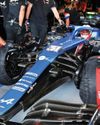
Wind tunnel testing has a fascinating history, beginning in the aerospace industry. As testing methods became more sophisticated and laboratory testing evolved, a need was identified to provide a method of validating design concepts. The Wright brothers were the first to achieve controlled flight as they built a tunnel to calibrate the characteristics of wing profiles and showed that the accepted characteristics were wrong.
However, few tunnels existed that would be capable of managing a 1:1 scale prototype. Aerospace engineers quickly figured out there were many advantages to preparing scale models. Namely, it enabled testing to take place at all, but furthermore cost, materials use and build times were slashed when compared to full-size prototypes.
Cars by their very nature operate close to, and in contact with, the ground, so automotive wind tunnels differ substantially in design to aerospace ones. A moving ground plane and effective boundary layer control are critical features but, in the early days of automotive wind tunnel testing, these weren’t available to full-size models. The concept of scale models within automotive and motorsport testing was therefore born out of similar necessity to aerospace.
This story is from the Design of a Racecar edition of Racecar Engineering.
Start your 7-day Magzter GOLD free trial to access thousands of curated premium stories, and 8,500+ magazines and newspapers.
Already a subscriber ? Sign In
This story is from the Design of a Racecar edition of Racecar Engineering.
Start your 7-day Magzter GOLD free trial to access thousands of curated premium stories, and 8,500+ magazines and newspapers.
Already a subscriber? Sign In
Talk the torque
More thoughts on in-wheel motors and their effects on twisting force
Rolling about
An explanation of the limitations of a previous load transfer article, bringing jacking forces into the mix
F1 breaks schedule records
The FIA has confirmed no fewer than 23 races on the 2022 Formula 1 World Championship schedule, the highest number of grands prix ever to be held in a single season, and that has led to criticism from some teams that will be on the road for eight months.

Under pressure
Toyota may have finished first and second at Le Mans this year, but the effort required to overcome a fuel delivery problem and finish with both cars was Herculean
Physics at work
Dutch company, Intrax, offers Racecar Engineering an insight into the technologies it employs to optimise its suspension products
Williams' 2030 ambition
Williams Racing has committed to becoming climate positive by 2030 as part of an all-new sustainability strategy.
Diff'rent strokes
Racecar looks at the different types of mechanical differential, their benefits and limitations
Das Boot
A curious Twitter exchange fired up a unique, hydrogen-powered, cross-country project that will contest the Baja 1000 in November 2022

Air born
Every racecar engineer's dream is a blank sheet of paper design. When Hoonigan and Subaru approached Vermont Sportscars about building the next generation of Gymkhana racer, that's just what the company was given

Remote control
Called variously ‘virtual garages’, ‘mission control’ or ‘race support rooms’ is the future of race engineering sitting in the warm back at HQ?